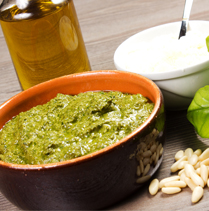
Find out what a true portion size is and how you these combine to reach your child’s needs throughout the day!
Portion sizes in the past 20 years have changed tremendously. Larger plates, cup holders, muffin tins and pizza pans are becoming the norm and now appear typical.
But what exactly is a portion size? Many Americans believe that a portion size is what is placed in front of them in a restaurant, however, restaurant portions are sometimes 3 times the size of recommended portion sizes. Often times we tend to underestimate the amount of food we eat and overestimate the recommended portion sizes for many foods.
Portion sizes are only part of the equation; you must also know how much you need to eat. Based on a 2000 calorie diet a typical meal would consist of 2-3 oz of meat, ½ cup pasta, rice, or potatoes, ½ cup vegetables, ½ cup fruit, and 1 cup of low fat milk. Relating the portion size of a serving to everyday items is an easy way to visualize what a true portion size looks like.
Portion Size Breakdown
Woman’s fist or baseball – a serving of vegetables or fruit
A rounded handful – about one-half cup cooked or raw veggies or cut fruit, a piece of fruit – this is a good measure for a snack serving, such as baked blue tortilla chips or whole-grain pretzels
Deck of cards – is a 3 ounce serving of meat, fish or poultry or the palm of your hand (don’t count your fingers!) – for example, one chicken breast, ¼ pound hamburger patty or a medium pork chop
Golf ball or large egg – one-quarter cup of dried fruit or nuts
Tennis ball – about one cup of pasta or ready to eat cereal
Computer mouse – small baked potato
Compact disc – one serving of pancake or small waffle
Thumb tip – one teaspoon of peanut butter
3 domino blocks – a 1 ½ ounce serving of hard cheese
Checkbook – a serving of fish (approximately 3 oz.)
Eyeball it! – Take a look at the recommended serving sizes on the label
Get out a measuring cup and practice measuring some of your favorite foods onto a plate, so that you can see how much (or how little!) a ½ cup or 3-ounce serving is. This will help you “eyeball” a reasonable serving for your kids!
MyPlate Guidance
You can then learn more about portion sizes for kids depending on their age and gender in our other article Food Portion Sizes for Children: Toddlers to Teens!
The key to a balanced diet for your kids is to include a wide range of healthy foods and colors, emphasizing lean meats, whole grains, low-fat dairy products (after 2 years of age) and fruits and vegetables. This variety will help us know that our children are getting all the vitamins, minerals and health-promoting phytonutrients they need to keep their bodies and minds strong.
See Rethink that Drink for more on hidden calories in beverages.












